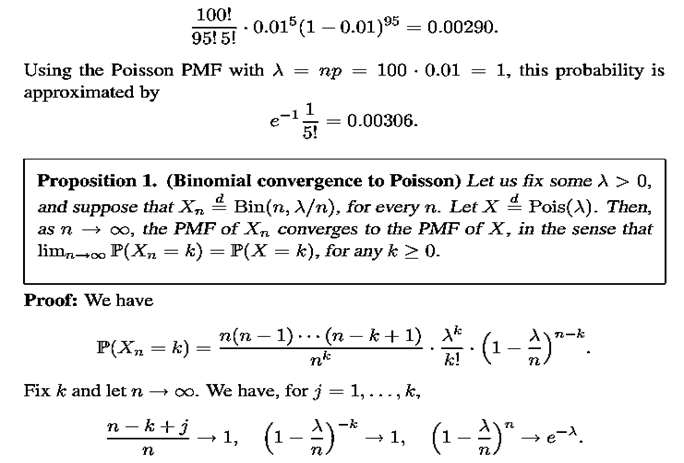SKEDSOFT
Notation:
Let us use the abbreviations dU(a, b), Ber(p), Bin(n, p), Geo(p), Pois(λ), and Pow(α) to refer the above defined PMFs. We will use notation d such as X = dU(a, b) or X ∼dU(a, b) as a shorthand for the statement that X is a discrete random variable whose PMF is uniform on (a, b), and similarly for the other PMFs we definedY to indicate that two random variables have the same PMFs.
Poisson distribution as a limit of the binomial: To get a feel for the Poisson random variable, think of a binomial random variable with very small p and very large n. For example, consider the number of typos in a book with a total of n words, when the probability p that any one word is misspelled is very small (associate a word with a coin toss that results in a head when the word is misspelled), or the number of cars involved in accidents in a city on a given day (associate a car with a coin toss that results in a head when the car has an accident). Such random variables can be well modeled with a Poisson PMF. More precisely, the Poisson PMF with parameter λ is a good approximation for a binomial PMF with parameters n and p, i.e.,

provided λ = np, n is large, and p is small. In this case, using the Poisson PMF may result in simpler models and calculations. For example, let n = 100and p = 0.01. Then the probability of k = 5 successes in n = 100 trials is calculated using the binomial PMF as

